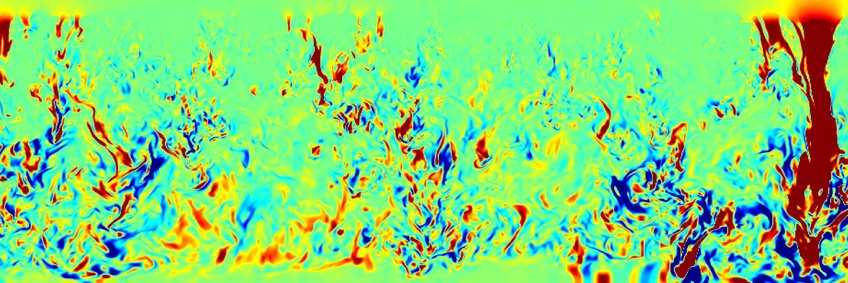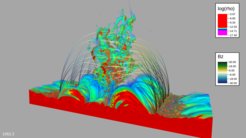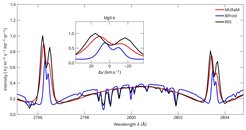
Solar and stellar magnetohydrodynamics
Magnetic fields are responsible for the restless activity of the Sun and other cool stars, i.e. the emergence and disappearance of dark spots, mass ejections and bursts of radiation connected with the so-called "flares". Solar activity can severly affect terrestrial infrastructure (e.g., breakdown of power grids, interruption of radio communication, radiation load on airplane passengers, disturbance or damage of satellite systems). It is therefore important to understand the physical processes underlying the generation of magnetic fields and their interaction with the plasma (electrically conducting gas) in the in the atmospheres of the Sun and other stars. Magnetic fields originate from induction processes driven by the convective motions which carry the energy generated by nuclar fusion towards the stellar surface. Our research addresses a variety of topics connected with solar and stellar magnetism, including:
- interaction of magnetic fields with radiative convection from the convection zone, through the photosphere and chromosphere and into the corona,
- chromospheric dynamics and diagnostics,
- prominences,
- stellar atmosphere and convection zones,
- generation of magnetic fields by a large-scale and small-scale self-excited dynamo processes,
- surface emergence of magnetic flux and formation of bipolar magnetic regions,
- evolution of the solar surface field as a result of the emergence of magnetic flux and its transport by horizontal flow fields (meridional circulation, differential rotation, large-scale convection): reversals and build-up of polar fields,
- NLTE modelling of the Chromosphere

Our research utilizes numerical simulations based on the equations of magnetohydrodynamics and radiative transfer. The simulation results are also used to calculate observable quantities (e.g., brightness maps, spectral line profiles, polarization signatures) in order to permit a direct comparison to observations. In this way, the simulations can be validated and, in turn, be used as a tool for the interpretation of observational results. While observations mostly provide information only from a thin layer in the photosphere, the simulations reveal the full three-dimensional structure of the underlying physical processes.








